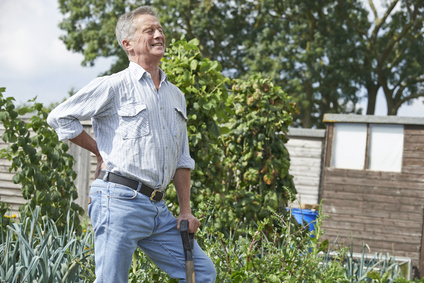What a great question!
Often, people who work more physical jobs consider their job to be a form of exercise.
Whether it’s construction or landscaping… working in a warehouse… doing daily house and gardening work… or even as a physiotherapist, we might all feel that because we are on our feet all day, we are physically active!
But is that the same as exercise? Maybe… Let’s check out the definition below!
The American College of Sports Medicine (ACSM) defines exercise as “a type of physical activity consisting of planned, structured, and repetitive bodily movement done to improve and/or maintain one or more components of physical fitness.”
If I am going up and down the stairs, bending to push a vacuum cleaner, getting down on the floor to clean the tub, or squatting to pull weeds in the garden, I am doing repetitive movements on a regular basis. So in a way, I am doing a form of exercise!
But is that enough? Is that all there is to exercise? We will address that in the following section!
As an aside… if you do have a physical job and don’t think it counts as exercise, just know that research into “job crafting” shows that people who reframe the physical things they do all day as a healthy way to move their body and maintain a level of strength and flexibility actually have improved health outcomes over time! Sometimes, things really are mind over matter… 😉
The different types of exercise…
If we get sciencey about it, then exercise can be divided into two categories: aerobic and anaerobic.
Simply put, aerobic means your muscles require a steady supply of oxygen to perform the exercise. These types of activities are more endurance-based.
- For example: brisk walking, running, cycling, swimming. i.e. cardio workouts.
Anaerobic activities are short-bursts of high intensity energy that break down glucose (sugar) stores in your body as an alternate energy supply to oxygen. This is not sustainable for longer periods of time.
- For example: sprinting, high intensity interval training (HIIT), weightlifting.
But we can break these grouping downs even further! The ACSM provides us with four kinds of exercise:
1. Cardiorespiratory Exercise: e.g. the aerobic activities mentioned above!
2. Strength (Resistance) Exercise: depending on the intensity of the exercise, this can be either aerobic, anaerobic, or a combination of both.

3. Flexibility Exercise: stretching exercises which can help prevent injuries as well as allow you to reach your full range of motion.
4. Neuromotor: this one is a newer addition! Also referred to as “functional fitness training”, these types of exercises involve a more active cognitive role to go along with the motor activity. E.g. exercises that involve balance, agility, coordination. Examples include dance and yoga, or even sports that include more strategic and quick reactions.
So, now that you’ve learned about different types of exercises, do you think your typical weekly routine includes all of the above?
The reality is, neither a physically active job, nor regular housework at home can hit all of the above categories. And sometimes, the type of exercise you are doing may not be what your body needs most at that point in time… So, while being physically active is always great, being strategic and intentional about the activities you engage in is the best way to maximize your physical health and fitness!
But how do we do that??
In Part Two of “What is exercise?” we will discuss some of the more commonly experienced barriers to exercising regularly, as well as suggestions on how to overcome them!
If you are just starting out, don’t feel overwhelmed by trying to incorporate all types of exercise into your routine! Start small. Even when you’re out for a brisk walk, you’re still lapping everyone else on the couch! 😉
If you are overfocusing on only one activity, e.g. running, don’t forget that strength training can improve your running speed and endurance while minimizing your risk of repetitive strain injuries. Just because your muscles are used to running doesn’t mean their strength is enough for long-term training or to avoid strains when you increase your training intensity.
If your exercise regimen is not hitting all of the categories listed above, then what are ways you can start incorporating different forms of training? Sometimes you can hit two birds with one stone… dance aerobics are a cardio activity that also has a neuromotor component. Certain types of yoga include both stretching and balance.
If you’ve got a familiar exercise routine but have recurrent injuries every time you try to progress or branch out, let us know and we can help!




